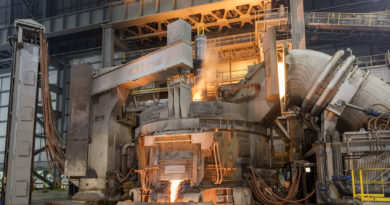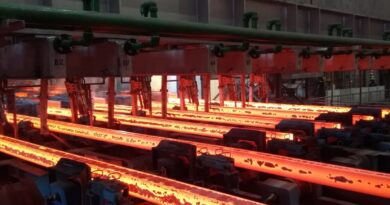Industrial Metallurgy focuses on extraction, processing, and use of metals
Industrial metallurgy studies metals and their properties, behavior, and applications in various industries and is a crucial driver of material science in modern engineering.
This field of science and engineering focuses on the extraction, processing, and use of metals to create materials and products that meet specific performance requirements.
Key Properties of Metals
The properties of different metallic materials affect the selection of suitable materials for specific industrial applications. Some properties include:
- Strength and hardness: These properties determine a metal’s ability to withstand mechanical forces and wear. High-strength metals, such as titanium and hardened steel, are used in applications that require durability and toughness.
- Ductility and malleability: Ductility refers to a metal’s ability to be drawn into thin wires, while malleability refers to its ability to be hammered or rolled into sheets. Metals such as gold and copper have high ductility and malleability, making them ideal for electrical wiring and sheet metal applications.
- Conductivity: Metals are known for their excellent thermal and electrical conductivity. Copper, for example, is widely used in electrical wiring because its high conductivity ensures the efficient transmission of electricity.
- Corrosion resistance: Some metals are naturally corrosion-resistant, while others can be treated to enhance this property. Stainless steel and aluminum alloys are commonly used in environments where corrosion resistance is essential, such as the marine and chemical industries.
The Core Processes of Metallurgy
The journey of metal from its raw form to a usable product involves several vital stages: extraction, refining, alloying, and fabrication. Each stage requires precise control and expertise to ensure the desired properties of the final product.
Extraction and Refining: The process begins with extracting metal ores from the earth. These ores are then refined to separate the metal from impurities. For example, iron is extracted from iron ore using a blast furnace, which reduces the ore to molten iron by removing oxygen.
Alloying: Alloying is the process of combining different metals to create an alloy with specific properties. This stage is critical because it allows engineers to tailor the properties of metals to meet particular needs. For example, chromium can be added to iron to create stainless steel, which is highly corrosion-resistant.
Fabrication: Once the metal or alloy is refined and prepared, it undergoes processes to achieve the desired shape and structure. Techniques such as casting, forging, rolling, and machining accomplish the final product.
Industrial Metallurgy Applications
The principles of industrial metallurgy are applied in various industries, including automotive, aerospace, construction, and electronics. The automotive industry relies on metallurgical advances to develop lightweight yet strong materials that improve fuel efficiency and safety. In aerospace, metallurgy ensures that materials can withstand extreme temperatures and loads; the construction industry benefits from metallurgical innovations to create durable and sustainable building materials. Industrial metallurgy is a complex and integral field at the heart of many modern technologies and industries. Whether it’s developing new alloys or improving manufacturing techniques, the science of metallurgy continues to drive innovation and progress in manufacturing.




